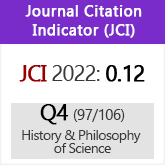The blood transfusion service of the republican army during the Spanish Civil War and its influence in Great Britain in World War II
DOI:
https://doi.org/10.3989/asclepio.2022.07Keywords:
Blood Transfusion, Spanish Civil War, Blood Transfusion Service of the Spanish Republic, Second World War, British Army Blood Transfusion ServiceAbstract
By the end of the First World War, the value of blood transfusion was widely recognized, but it was not until the Spanish Civil War (1936-1939) that large civilian blood donor organizations were created to provide preserved (citrated) blood for transfusion, for both civilian and military patients.
Indirect transfusion techniques were developed to administer this blood, with easy-to-use instruments, capable of being carried out anywhere and by any medical personnel with experience in the administration of intravenous injections. Efficient transportation and distribution systems were also established in order to adequately supply the sanitary facilities that served the moving battle fronts. This pioneering work enabled the creation, for the first time in history, of military blood transfusion services. While this was the case for both the insurgent (Nationalist) forces and those of the Spanish Republican Government, it is the latter that forms the focus of this particular study. This is made possible by the publications of Catalan hematologist Frederic Duran Jordà, creator and director of the Republican Blood Transfusion Service, who details the techniques and procedures developed during the war for the collection, testing, distribution and transfusion of blood. Further insight - especially with regard to the practical application of front-line transfusion - can be gleaned from the various writings of Dr Reginald Saxton, British volunteer with the Republican Sanidad Militar.
It is the intention, here, to demonstrate that the British authorities benefitted greatly from the Spanish experience in the development of plans for transfusion services that would prove crucial in treating civilian and military casualties during World War II (1939-1945). Frederic Duran Jordà, and Reginald Saxton were key advisers, together with others returning from Spain, including renowned British hematologist, Janet Vaughan. Moreover, the principles developed in Spain (1936-39) for delivery of military blood transfusion practice still support current measures in battlefield casualty resuscitation.
Downloads
References
Broggi, Moisès (1977), 'Sobre Frederic Duran Jordà', Gimbernat, 27, pp. 188-191.
Coni, Nicholas (2002), 'Medicine and the Spanish Civil War', J Roy Soc Med, 95, pp. 147-50. https://doi.org/10.1177/014107680209500314 PMid:11872771 PMCid:PMC1279488
Coni, Nicholas (2008), Medicine and Warfare. Spain 1936-1939, New York, Routledge, Taylor & Francis Group.
Franco, Avelino, Cortes, Joaquín, Álvarez, Julián y Diz, José Carlos (1996), 'The development of blood transfusion: the contributions of Norman Bethune in the Spanish Civil War (1936-1939)', Can J Anaesth, 43, pp. 1076-8. https://doi.org/10.1007/BF03011914 PMid:8896864
Grífols i Espés, Joan (1996), Frederic Duran Jordá: un método y una época, Barcelona, Editorial Acción Médica.
Grifols, Joan (2007), 'The contribution of Dr. Duran-Jordà to the advancement and development of European blood transfusion', ISBT Sci Ser, 2, pp. 134-8. https://doi.org/10.1111/j.1751-2824.2007.00078.x
Hess, John R. y Schmidt, Paul J. (2000), 'The first blood banker: Oswald Hope Robertson', Transfusion, 40, pp. 110-3. https://doi.org/10.1046/j.1537-2995.2000.40010110.x PMid:10644820
Lethbridge, David (2013), Norman Bethune in Spain: Commitment, Crisis & Conspiracy, Canada Blanch/Sussex Academic Studies on Contemporary Spain, 2013.
Lozano, M. y Cid, Joan (2005), 'Frederic Duran Jordà: Centenario del nacimiento de un pionero de la hemoterapia', Sociedad Española de Transfusión Sanguínea, 56, 2.
Lozano M. y Cid Joan (2007), 'Frederic Duran-Jordà; a transfusion medicine pioneer. Transfus Med Rev, 21:75-81. https://doi.org/10.1016/j.tmrv.2006.08.004 PMid:17256247
Palfreeman, Linda (2015), Spain Bleeds. The development of battlefield blood transfusion during the Civil War. Brighton, England: Sussex Academic Press.
Pinkerton, Peter H. (2002), 'Norman Bethune and transfusion in the Spanish Civil War', Vox Sang, 83 (Suppl. 1), pp. 117-20. https://doi.org/10.1111/j.1423-0410.2002.tb05282.x PMid:12617118
Pinkerton, Peter H. (2008), 'Canadian surgeons and the introduction of blood transfusion in war surgery', Transfus Med Rev, 22, pp. 77-86. https://doi.org/10.1016/j.tmrv.2007.09.004 PMid:18063194
Preston, Paul (2012), The Spanish Holocaust: Inquisition and Extermination in Twentieth-Century Spain, New York: W.W. Norton, 2012 and London: HarperCollins, 2012.
Schneider, William H. (1997), 'Blood transfusion in peace y war, 1900-1918', Soc Hist Med, 10, pp. 105-26. https://doi.org/10.1093/shm/10.1.105 PMid:11619186
Schneider, William H. (2003), 'Blood transfusion between the wars', J Hist Med Allied Sci, 58, pp. 187-224. https://doi.org/10.1093/jhmas/58.2.187 PMid:12776438
Stewart, Roderick y Majada Jesús (2014), Bethune in Spain, Montreal and Kingston, Canada, McGill-Queens University Press.
Stewart, Roderick y Stewart, Sharon (2011), Phoenix: The Life of Norman Bethune, Montreal and Kingston, Canada, McGill-Queens University Press.
Published
How to Cite
Issue
Section
License
Copyright (c) 2022 Consejo Superior de Investigaciones Científicas (CSIC)

This work is licensed under a Creative Commons Attribution 4.0 International License.
© CSIC. Manuscripts published in both the printed and online versions of this Journal are the property of Consejo Superior de Investigaciones Científicas, and quoting this source is a requirement for any partial or full reproduction.All contents of this electronic edition, except where otherwise noted, are distributed under a “Creative Commons Attribution 4.0 International” (CC BY 4.0) License. You may read here the basic information and the legal text of the license. The indication of the CC BY 4.0 License must be expressly stated in this way when necessary.
Self-archiving in repositories, personal webpages or similar, of any version other than the published by the Editor, is not allowed.
Funding data
Ministerio de Ciencia, Innovación y Universidades
Grant numbers PID2019-104581GB-I00















